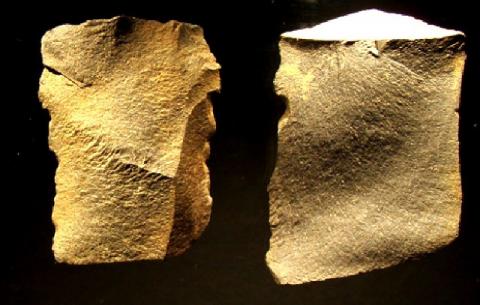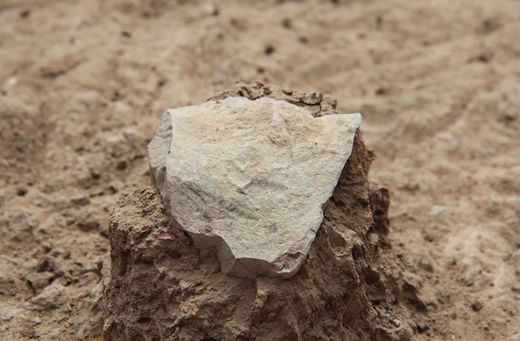
The items, described in the latest issue of the journal Nature, are now the oldest stone tools ever found.
They "show that early humans (essentially proto-humans) used and made stone tools 3.3 million years ago, which is about 700,000 years earlier than the previously earliest known date for early stone tools," Erella Hovers, who authored an accompanying "News & Views" article, told Discovery News.
Hovers, who is a senior member of the Institute of Archaeology at The Hebrew University of Jerusalem, added that the other more recent tools were attributed to Homo habilis, aka "Handy Man," whose culture is called the Oldowan. Now it looks like there was a much earlier culture--as of yet unnamed--and that stone tool making was not unique to our genus.
The approximately 149 stone artifacts tied to tool making were found at a site called Lomekwi 3 next to Lake Turkana in Kenya.
"The tools from Lomekwi show a mixture of pounding and flaking activities," Hovers said.
Lead author Sonia Harmand of the Turkana Basin Institute at Stony Brook University and her team think that the tools could have been used for breaking open nuts or tubers, for bashing open dead logs to get at insects inside, and for other purposes.
The presence of volcanic ash layers, together with evidence about Earth's magnetic field, allowed the researchers to date the finds. Co-author Dennis Kent explained that Earth's magnetic field periodically reverses itself, and the chronology of those changes has been well documented going back millions of years.
"We essentially have a magnetic tape recorder that records the magnetic field...the music of the outer core," he said in a press release.
Now a key question is: Who made the tools?
Non-human primates, such as chimpanzees, orangutans, gorillas and certain monkeys, are all known to make and use rudimentary tools. Other than cracking open nuts with big rocks, the non-human primates mostly just use twigs and other plant-based materials as tools. Hovers therefore believes that stone tool crafting is predominantly associated with humans.
The Lomekwi 3 toolkit "clearly predates the earlier known occurrence of Homo, which is currently known (from) 2.8 million years ago in the Afar region of Ethiopia," Hovers said.
A possible maker of the tools is Australopithecus afarensis, which had both ape and human characteristics. Yet another possibility is Kenyathropus platyops. As its name suggests, Kenyathropus lived in Kenya. It also exhibited a mixture of human and ape features.
Still another possibility is that the maker and user of the tools represents a species of human that is not known yet to anthropologists. What is clear is that the maker had good hand-eye coordination and ease in using his or her hands and arms.
This is significant, because that suggests changes in the brain and spinal tract needed for such activity could have occurred well before 3.3 million years ago.
Intriguingly, animal bones from Dikaka, Ethiopia, which bear stone-inflicted cut marks, date to at least 3.39 million years ago, suggesting that stone tools were made and used even before the Lomekwi 3 items.
The scientists therefore are wondering if the Ethiopia and Kenya finds were one offs, with the cultures not spreading outside of those populations, or if the tool "technologies" did indeed spread and evolve, marking the dawn of a whole new trans-formative era in the evolution of our distant human-like cousins.
"Further fieldwork in sediment layers dating 3.3-2.6 million years ago is needed to verify that this site in Kenya reflects the emergence of a new hominin (early proto-human) behavior and is not an isolated incidence," Hovers said. "Researchers are now equipped with a search template of what such very early tools might look like, and will be better able to recognize them."




Reader Comments